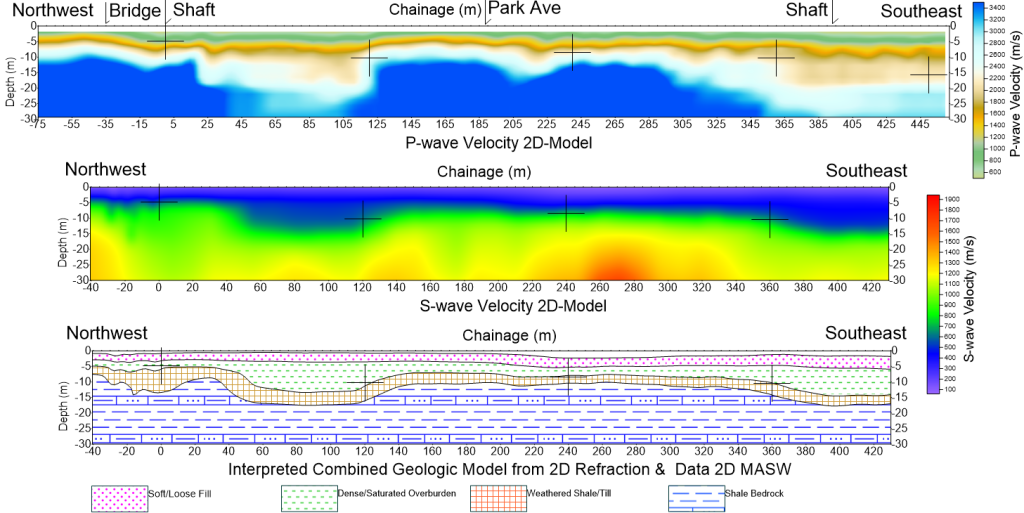Bedrock Profiling in 2D or 3D
- Able to be applied to uneven terrain or marine environments
- Typically depths up to 100m
- Non-Invasive, entirely from surface
- Rock rippability studies
- Rapid turnover in data collection and delivery
- Water table studies
- Can detect anomalies, voids, weak zones, large objects
- Highly applicable to dams, levees, mine sites, large construction,




